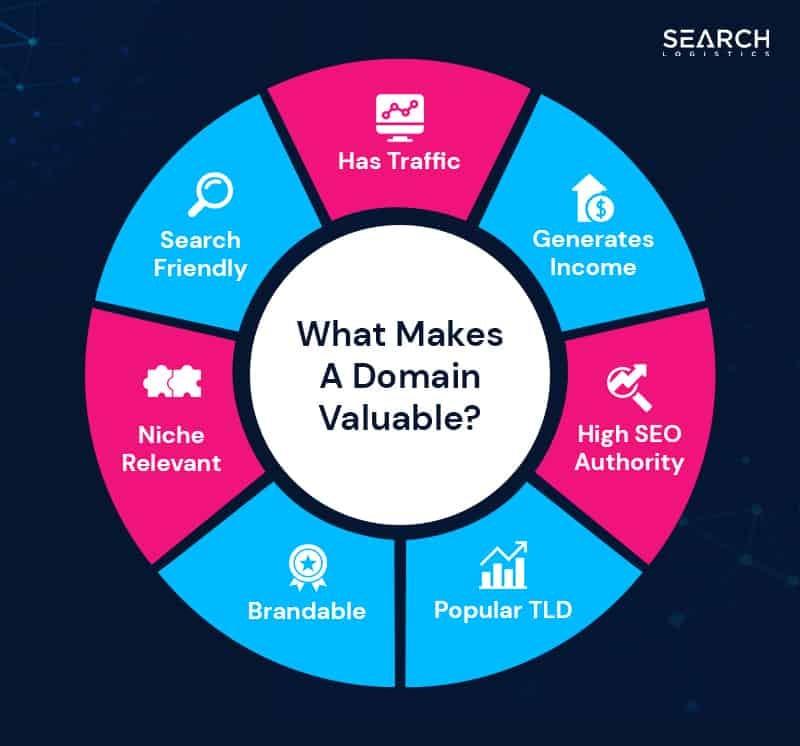Table of Contents
- Understanding the Basics of Domain Flipping and Its Potential Profitability
- Identifying Valuable Domains: Tips for Effective Research
- Crafting Winning Listings: How to Showcase Your Domains for Sale
- Navigating the Domain Marketplace: Best Platforms and Strategies
- Maximizing Your Return: Negotiation Techniques and Post-Sale Strategies
- Q&A
- In Summary


Understanding the Basics of Domain Flipping and Its Potential Profitability
Domain flipping involves purchasing domain names with the intention of reselling them at a profit. It’s a strategy that requires a keen understanding of market trends, the demand for specific keywords, and the nuances of online branding. Successful domain flippers often focus on identifying domain names that not only have appealing keywords but also possess memorable and brandable qualities. The key is to find names that resonate with businesses or influencers looking to establish their online presence.
To maximize profitability, it’s fundamental to research the market and understand what types of domain names are selling for high prices. Factors that contribute to a domain’s value include:
- Length: Shorter domains are generally more desirable.
- Keywords: Domains that include popular or trending keywords tend to have higher resale values.
- Extension: .com domains are typically seen as more trustworthy and valuable than other extensions.
- Brandability: A name that’s catchy and easy to spell might attract more buyers.
Workable strategies also include keeping track of expired domains. Expired domains often retain existing traffic and backlinks—valuable assets for new owners. Many successful flippers utilize tools to monitor domain expiry and quickly snap up high-potential names. As a guideline, here’s a simple table outlining key factors influencing domain valuation:
| Factor | Impact on Value |
|---|---|
| Length | Shorter domains are more valuable |
| Keywords | Relevant keywords increase demand |
| Extension | .com domains are preferred by buyers |
| Traffic | Existing traffic can enhance value significantly |
Identifying Valuable Domains: Tips for Effective Research
When diving into the world of domain flipping, identifying valuable domains is crucial for maximizing your investment. One of the first steps in your research should be understanding the market demand for certain keywords. Utilizing tools like Google Trends or keyword planners will help you assess which terms are gaining traction. Look for domains that not only incorporate high-traffic keywords but also possess a short and memorable structure. This makes them easier to brand and marketing-friendly.
Another key aspect of your research should involve checking the backlink profile of potential domains. A domain with a strong backlink history can significantly enhance its value. Tools such as Ahrefs and SEMrush allow you to analyze backlink quality and quantity. When assessing a domain, consider the following factors:
- Domain Authority (DA) – Higher scores indicate better potential for ranking.
- Spam Score – Lower spam scores suggest a more reputable domain.
- Link Relevance - Backlinks from related, high-quality sources enhance credibility.
examine the historical sales data of comparable domains to gauge their market value. Websites like NameBio provide databases of past domain sales, enabling you to identify trends in pricing based on keywords, length, and extensions. Consider creating a simple table to compare potential domains and their key metrics for easier evaluation:
| Domain Name | DA | Backlink Count | Price Estimate |
|---|---|---|---|
| exampledomain.com | 45 | 300 | $1,200 |
| bestkeywords.com | 60 | 500 | $2,500 |
| markettrendz.net | 38 | 150 | $800 |
By integrating these elements into your research strategy, you’ll be better positioned to identify domains that not only hold potential for flipping but also ensure a solid return on your investment.


Crafting Winning Listings: How to Showcase Your Domains for Sale
Effective domain listings are all about presentation and clarity. To attract prospective buyers, consider highlighting key features of your domains right from the start. When crafting your description, ensure that the most compelling attributes are front and center. For example, if your domain is short, memorable, or keyword-focused, emphasize these points. A catchy tagline or a brief summary can also serve to make your listing stand out in crowded marketplaces.
Utilizing high-quality visuals is another powerful strategy. Domains are intangible, but visually representing their potential can enhance your listing. Consider including a simple infographic or chart that showcases metrics like search volume, domain authority, and previous sales data. You might create a table to present comparisons with similar domains, giving buyers a clearer understanding of value:
| Domain | Search Volume | Price |
|---|---|---|
| example1.com | 10,000 | $2,000 |
| example2.com | 5,000 | $1,500 |
| example3.com | 15,000 | $3,000 |
fostering a sense of urgency can significantly impact buyer interest. Strategies include offering limited-time discounts or showcasing the number of inquiries or bids in real-time, if applicable. Listing social proof, such as testimonials from past buyers or statistics on how your domains have driven traffic or revenue for others, can build trust and encourage action. By combining these elements, your listings will be more appealing and positioned to convert viewers into buyers.


Navigating the Domain Marketplace: Best Platforms and Strategies
When it comes to sourcing domains for flipping, several platforms stand out due to their user-friendly features and extensive listings. Sedo and Flippa are two of the most popular marketplaces, enabling users to buy and sell domains with ease. On Sedo, you can explore a wide array of premium domains, while Flippa offers not just domains, but also websites, apps, and online businesses for sale. Both platforms allow you to set up alerts for specific keywords, making it easier to snag domains that fit your flipping strategy.
Another approach worth considering is leveraging social media and online communities dedicated to domain flipping. Platforms such as Twitter, Facebook Groups, and LinkedIn provide vibrant spaces where investors exchange leads, share advice, and occasionally offer domains for sale. Pay attention to hashtags like #DomainFlipping and #DomainInvesting to find potential opportunities. Engaging with these communities not only widens your network but also enhances your insights into industry trends and pricing strategies.
It’s crucial to adopt a strategic mindset when buying and selling domains. One effective strategy is to focus on keyword-rich domains, as these can drive more organic traffic. Consider the following criteria when assessing a domain’s potential:
| Criteria | Importance |
|---|---|
| Length | Shorter domains are often more memorable and valuable |
| Keyword Relevance | Domains that contain trending keywords can attract more buyers |
| Brandability | Unique, catchy names lend themselves better to branding opportunities |
| Extension | .com remains the most sought-after extension but consider others like .io or .co for tech startups |
By carefully selecting domains based on these criteria and employing effective marketing techniques, you can enhance the profitability of your domain flipping endeavors.


Maximizing Your Return: Negotiation Techniques and Post-Sale Strategies
When it comes to maximizing your profits in the domain flipping business, effective negotiation techniques play a crucial role. Engaging with potential buyers requires a balance of assertiveness and empathy. Start by conducting thorough research on the market value of your domains. This establishes a solid foundation for your negotiations. During discussions, consider employing the following strategies:
- Listen Actively: Understanding the buyer’s needs can give you insight into what they value most.
- Highlight Unique Features: Emphasize any distinctive qualities of your domain that make it stand out.
- Be Prepared to Walk Away: Often, having the confidence to walk away from a deal can lead to better offers.
Once the sale is complete, your focus should shift to post-sale strategies that ensure continued success. Follow-up communication with the buyer can foster positive relationships and encourage future opportunities. Consider implementing a systematic approach, such as:
| Strategy | Purpose |
|---|---|
| Send a Thank You Email | Build rapport and express appreciation. |
| Offer Post-Sale Support | Assist with any questions about the domain. |
| Solicit Feedback | Gain insights for improving future transactions. |
In addition to these strategies, continually refine your process based on insights gained from each transaction. Keep an eye on industry trends and adjust your negotiation approach accordingly. Taking a proactive stance will not only maximize individual returns but can also cultivate a reputation that encourages repeat business in the competitive domain flipping market.
Q&A
Q&A: Domain Flipping – How to Use It for Profit
Q1: What is domain flipping? A1: Domain flipping is the process of buying domain names at a low price and selling them later at a higher price. It’s a speculative venture akin to real estate flipping, where the objective is to capitalize on the increasing value of desirable domain names.Q2: How do I identify valuable domains to flip? A2: Look for domain names that are short, memorable, and easy to spell. Keywords relevant to popular niches or industries can also increase a domain’s value. Tools like Google Trends can help gauge the popularity of certain keywords, while domain valuation tools can provide insights into a domain’s market worth.
Q3: Where can I find domains to buy? A3: You can explore various avenues such as domain registrars (like GoDaddy or Namecheap), expired domain marketplaces, and auction sites. Additionally, monitor websites that might be going out of business or looking to let go of unused domains.
Q4: What factors affect the resale value of a domain? A4: Several factors influence a domain’s resale value, including its length, keyword relevance, and brandability. Domains with established traffic, age, and authority can also command higher prices. The .com extension generally holds the highest value, but niche-specific TLDs (top-level domains) can be lucrative too.
Q5: How should I market my domain for sale? A5: Create a clear and compelling listing that highlights the domain’s strengths. Use platforms like Sedo, Flippa, or even your own website to showcase your domain. Social media and domain forums can also be effective for reaching potential buyers.
Q6: What are the risks associated with domain flipping? A6: Like any investment, domain flipping isn’t without its risks. The domain market can be volatile, and there’s no guarantee of making a profit. It’s essential to conduct thorough research before purchasing any domain and to avoid overspending based on hype.
Q7: Is domain flipping a full-time job or a side hustle? A7: Domain flipping can be done as either a full-time job or a side hustle, depending on your goals, resources, and the amount of time you can dedicate. Many individuals start it as a part-time venture, but successful flippers often transition to it full-time as they learn the ins and outs of the market.
Q8: How long does it typically take to sell a domain? A8: The time it takes to sell a domain can vary widely based on its desirability, pricing strategy, and market conditions. Some domains may sell within days, while others could take months or even longer. Patience and effective marketing are key.
Q9: Are there any legal considerations in domain flipping? A9: Yes, be mindful of trademarks and brand names when purchasing domains. Selling domains that infringe on trademarks can lead to legal issues. Always conduct due diligence to ensure that your domain doesn’t violate any existing trademarks or intellectual property rights.
By understanding these essential aspects of domain flipping, you can navigate the landscape more effectively and maximize your potential profits. Whether you’re just starting or looking to refine your strategy, staying informed is crucial to success in this evolving market.

